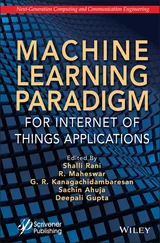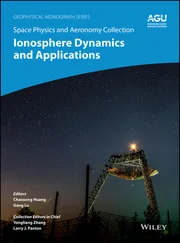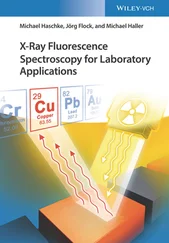This book, representing a collaboration of like-minded clinicians, is the first to introduce the idea of PRF and cord blood stem cells in endodontics. It contains an overview of PRF itself with up-to-date information on tissue regeneration, as well as step-by-step instructions on how to use PRF in a variety of endodontic and oral surgery procedures. We have been using this knowledge for years to improve tissue healing for our patients, and we hope this book will help you on your quest to improve healing for your patients.
Kayvon Javid, DDS
Private Practice
San Pedro, California
Yvonne Kapila, DDS, PhD
Professor
Department of Oral and Maxillofacial Surgery
School of Dentistry
University of California San Francisco
San Francisco, California
Gregori M. Kurtzman, DDS
Private Practice
Silver Spring, Maryland
Edward S. Lee, DDS
Clinical Instructor
Department of Preventive and Restorative Dental Sciences
School of Dentistry
University of California San Francisco
San Francisco, California
Carlos Fernando Mourão, DDS, MSc, PhD
Private Practice
San Pedro, California
Yogalakshmi Rajendran, BDS, MS
Assistant Clinical Professor, Health Sciences
Director, Predoctoral Periodontics
Department of Orofacial Sciences
School of Dentistry
University of California San Francisco
San Francisco, California
Mohammad (Mike) Sabeti, DDS, MA
Professor and Endodontic Program Director
Department of Preventive and Restorative Dental Sciences
School of Dentistry
University of California San Francisco
San Francisco, California
C. Cameron Taylor, PhD
Research and Development Supervisor
Invitrx Therapeutics
Irvine, California
Mahmoud Torabinejad, DMD, MSD, PhD
Adjunct Professor
Department of Preventive and Restorative Dental Sciences
School of Dentistry
University of California San Francisco
San Francisco, California
Habib Torfi, MSE
CEO and President
Invitrx Therapeutics
Irvine, California
Eric Wong, DDS
Division Chair, Endodontics
Department of Preventive and Restorative Dental Sciences
School of Dentistry
University of California San Francisco
San Francisco, California
Recent studies using novel biomaterial scaffolds that contain host endogenous growth factors represent a departure from traditional clinical approaches and may result in better and more predictable regenerative solutions in medicine and dentistry. As early as 1966, Rule and Winter published a case report regarding continued root formation and apical closure in an immature human premolar tooth using pulp bleeding as a scaffold. Nygaard-Ostby et al, Nevins et al, Iwaya et al, Banchs and Trope, as well as others reported pulp revascularization in teeth with necrotic pulps and immature apices that showed continuous root maturation, dentinal wall thickening and, in some cases, a positive response to vitality tests. In 2011, we reported a case of pulp revascularization using platelet-rich plasma (PRP) in a second maxillary premolar with immature root that had been accidently extracted and then replanted. After removing the necrotic pulp, irrigating it with 5.25% sodium hypochlorite, and medicating it with a triple antibiotic paste for 3 weeks, we prepared PRP from the patient’s blood and injected it into the canal space. Mineral trioxide aggregate (MTA) was placed over the clotted PRP and double-sealed with Cavit (3M) and amalgam. Radiographic examination of this tooth 5.5 months later showed resolution of the periapical lesion, further root development, and continued apical closure. Vitality tests elicited positive responses like those found in the first premolar tooth. The shortcomings of PRP include the need to draw blood from the patient and the complexity of centrifugtion and purification in a clinical setting.
Platelet-rich fibrin (PRF) is an autologous product that contains high concentrations of nonactivated, functional intact platelets within a fibrin matrix that release a relatively constant concentration of growth factors/cytokines over a few days. It is easier to produce but it has to be used immediately after blood drawing and centrifugation. PRF is a potential substitute for PRP in regenerative endodontics and other regenerative procedures involving reconstruction of hard tissues, such as surgical endodontics and adjunctive surgical procedures like root amputation, hemisection, and repair of root perforations.
The main purpose of PRF Applications in Endodontics is to stimulate research in regenerative procedures in endodontics and encourage clinicians to use PRF to improve healing of their patients and save natural dentition. The book has seven chapters and starts with the history of stem cells in regenerative medicine and its possible applications in endodontics, followed by PRF armamentarium and description of how to make PRF, use of PRF in nonsurgical endodontic procedures, its soft tissue applications, hard tissue applications, surgical endodontics, and finally socket preservation. It is assembled by well-known scientists and clinicians who are experts in their fields and interested in the use of innovative materials and techniques to improve human lives.
Mahmoud Torabinejad, DMD, MSD, PhD
1 Banchs F, Trope M. Revascularization of immature permanent teeth with apical periodontitis: New treatment protocol? J Endod 2004;30:196–200.
2 Dohan DM, Choukroun J, Diss A, et al. Platelet-rich fibrin (PRF): A second-generation platelet concentrate. Part I: Technological concepts and evolution. Oral Surg Oral Med Oral Pathol Oral Radiol Endod 2006;101:e37–e44.
3 Iwaya SI, Ikawa M, Kubota M. Revascularization of an immature permanent tooth with apical periodontitis and sinus tract. Dent Traumatol 2001;17:185–187.
4 Mao JJ, Kim SG, Zhou J, et al. Regenerative endodontics: Barriers and strategies for clinical translation. Dent Clin North Am 2012;56:639–649.
5 Nevins A, Wrobel W, Valachovic R, Finkelstein F. Hard tissue induction into pulpless open-apex teeth using collagen-calcium phosphate gel. J Endod 1977;3:431–433.
6 Nygaard-Ostby B, Hjortdal O. Tissue formation in the root canal following pulp removal. Scand J Dent Res 1971;79:333–349.
7 Rule DC, Winter GB. Root growth and apical repair subsequent to pulpal necrosis in children. Br Dent J 1966;120:586–590.
8 Torabinejad M, Faras H. A clinical and histological report of a tooth with an open apex treated with regenerative endodontics using platelet-rich plasma. J Endod 2011;38:864–868.
9 Torabinejad M, Turman M. Revitalization of tooth with necrotic pulp and open apex by using platelet-rich plasma: A case report. J Endod 2011;37:265–268.
1
Stem Cells in Regenerative Medicine
C. CAMERON TAYLOR, PHD
HABIB TORFI, MSE
MOHAMMAD SABETI, DDS, MA
• Gain a better understanding of stem cell biology and how it relates to regenerative medicine, specifically dentistry
• Compare different sources of stem cells and the relative strengths and weaknesses associated with each source
• Gain a better understanding of a mesenchymal stem cell secretome and why it is important therapeutically
R egenerative medicine , also commonly known as tissue engineering , is a discipline of medicine that is focused on restoring native tissue structure and functionality to an afflicted tissue. Dentistry has traditionally been at the forefront of regenerative medicine, commonly employing novel bioactive materials to stimulate bone growth and regeneration. Recently, stem cells and other cell-based therapies have attracted significant attention in this space due to their ability to not only treat patients’ symptoms but to improve physiologic activity and restore native tissue structure.
Читать дальше












